(1500 products available)

















































































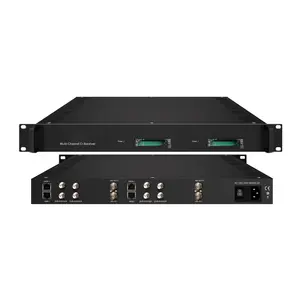
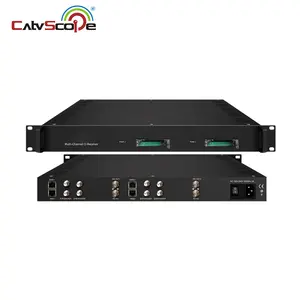
























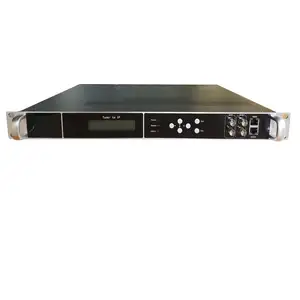

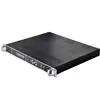












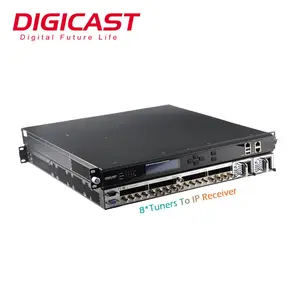

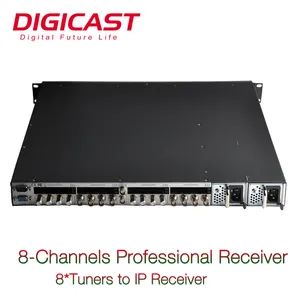
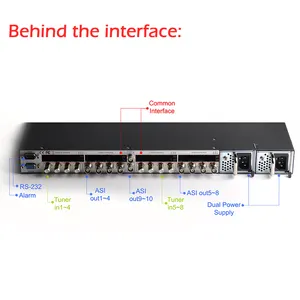































A DVB-C IRD is a Digital Video Broadcast- Cable Integrated Receiver Decoder that receives and decodes digital signals from cable television networks. These are common in areas where cable TV networks distribute television. DVBCs are used to view and access cable TV channels transmitted digitally through a coaxial cable. They can also be used to record programs, pause live TV, and access interactive services. DVBC IRDs come in different models and features depending on the manufacturer. They include the following;
Video Decoding:
The DVB-C IRD converts the encrypted digital cable TV signals into viewable formats like SD or HD resolutions that match the screen size of TVs or monitors. This allows users to watch channels in clear, high-quality pictures.
Multiplexing:
It has many cables TV joined together in one signal called multiplexed streaming. The system can take out different channels so workers or people using it can switch between them. This shows that several channels can be moved over cable at one time. It allows a lot of programming options to be presented from one cable.
Multiple Tuner:
Using more than one DVB-C tuner means that several different cable TV channels can be recorded or watched all at once. A multi-tuner setup records multiple programs simultaneously or plays different channels without having to change the channel on the cable. This allows seamless viewing and recording of different shows at the same time.
Output Interfaces:
Latest DVB-C industrial IRD have different outputs like HDMI, SDI, and others to connect to TVs, projectors, and video systems. An IRD with HDMI output enables connection to high-definition displays for home and hospitality environments. Units with SDI output provide a stable, broadcast-grade connection for professional applications.
Low Latency:
For some uses like gaming and betting, having very little delay or waiting time is very important. The DVB-C Integrated Receiver Decoder can provide low latency decoder that ensures there is not much time lost between when something happens and when it is seen on the screen. This allows real-time accuracy for these types of activities where having a quick response is needed.
Multiple Streams:
Some DVB-C IRDs are able to decode or change several streams at the same time. This means that various video and audio signals can be processed concurrently. Multi-stream capability allows different content to be distributed simultaneously to different viewing locations from a single IRD.
Networking:
Newest IRD models can be connected to the internet through LAN or Wi-Fi. This allows streaming of additional content like on-demand shows, movies, and other media from online sources directly to a viewing screen.
Cable IRDs are used in various industries to deliver high-quality video content. Here are some key applications:
Broadcast Television
In broadcast systems, cable IRDs are essential for receiving and decoding signals. These signals are transformed into formats suitable for distribution through platforms like terrestrial transmission and satellite.
Cable TV Services
To provide reliable cable television services, operators rely on cable IRDs to decode channels. These channels are then made accessible to subscribers in viewable formats.
Hospitality Industry
Cable IRDs find applications in hotels and cruise ships, where they are utilized to provide entertainment systems. These systems offer a range of entertainment options to guests and decode cable TV channels.
Surveillance Systems
Some IRDs are employed in video surveillance. They decode camera feeds that can be recorded and monitored for enhanced security purposes.
Streaming Platforms
Streaming services also make use of cable IRDs. In this case, the IRD receives content from a cable source, and encoding is done to make the content available for internet streaming.
Sports Venues
Sports stadiums heavily depend on cable IRDs to provide real-time video feeds. These feeds are subsequently distributed to screens installed throughout the venue for entertainment and to keep the audience informed.
Education and Training
Institutions leverage IRDs to capture and distribute educational content. This allows for the creation of on-demand libraries that are beneficial for both students and faculty members.
Church and Religious Organizations
In these setups, IRDs serve as tools for ministry. They enable multicast distribution of services and enable the encoding of worship content for storage as archives.
Be mindful of video quality:
DVB-C conditional access systems are used to receive cable TV. To get high TV quality, the user needs to get a decoder that is at least capable of 1080p HD output. If the customer wants to receive and decode cable TV channels that are broadcast in 4K, they need to get a decoder capable of 4K decode and output.
Know how many channels to watch:
After having a DVB-C decoder, the next important step is to know how many channels the decoder can watch. Cable TV channels are usually encrypted. The decoding and channel watching depend on the encryption system, which is conditional access. To watch a specific cable TV channel, the user needs to subscribe to a conditional access system because only those channels will be seen. Each conditional access system has a different number of channels, so the user must know how many channels they will subscribe to first.
Be mindful of price:
The price of DVB-C decoders may differ based on their capabilities, support conditional access and which broadcast encryption system they use. Users must also prepare a budget to buy a decoder.
Look for future-proof options:
If the customer plans to watch cable TV in 4K in the future, they need to buy a decoder capable of 4K decode and output. 4K video gives a better user experience, but the device used to watch 4K must be compatible with 4K, which is HDMI 2.0 or higher.
Be mindful of Output Interfaces:
The DVB-C decoder has different output interfaces. Users need to know what output interfaces their TV has. Common output interfaces of DVB-C decoders are HDMI and AV OUT. The AV output has composite video and L/R audio, while the HDMI output has video and audio embedded in it. Users need to make sure their TV or monitor has at least one of the output connections of the DVB-C decoder to avoid problems connecting the decoder to their TV.
Q1: What is the DVBC IRD's significance in television?
A1: The Digital Video Broadcast Cable Integrated Receiver Decoder (DVBC IRD) is essential in the shift toward digital broadcasting. The device, which is a decoder, turns encrypted digital signals into visible ones, paving the way for crystal clear digital channels, and enhancing the viewing experience.
Q2: DVBC IRDs come with additional features; what are some of them?
A2: More than only decoding tasks, DVBC integrated receiver decoders are multifunctional. They provide a range of features that enhance the viewing experience. These features include interactive applications, electronic program guides, and digital video recording. They also allow access to internet-based content, such as streaming services and multimedia. Their adaptable nature allows broadcasters to provide tailored content to distinct audience segments, boosting viewer engagement and entertainment.
Q3: Where is DVB-C mainly used?
A3: DVB-C is primarily used in cable television systems, where digital television signals are transmitted through coaxial cables to subscribers' homes. It is also used in some private video distribution systems, such as hotel IPTV networks and institution-based television systems.
Q4: How does one watch DVB-C channels?
A4: One can watch DVB-C channels by subscribing to a cable television provider that uses the DVB-C standard. This involves getting a cable set-top box or tuner that is compatible with DVB-C to decode and view the digital channels on a television.